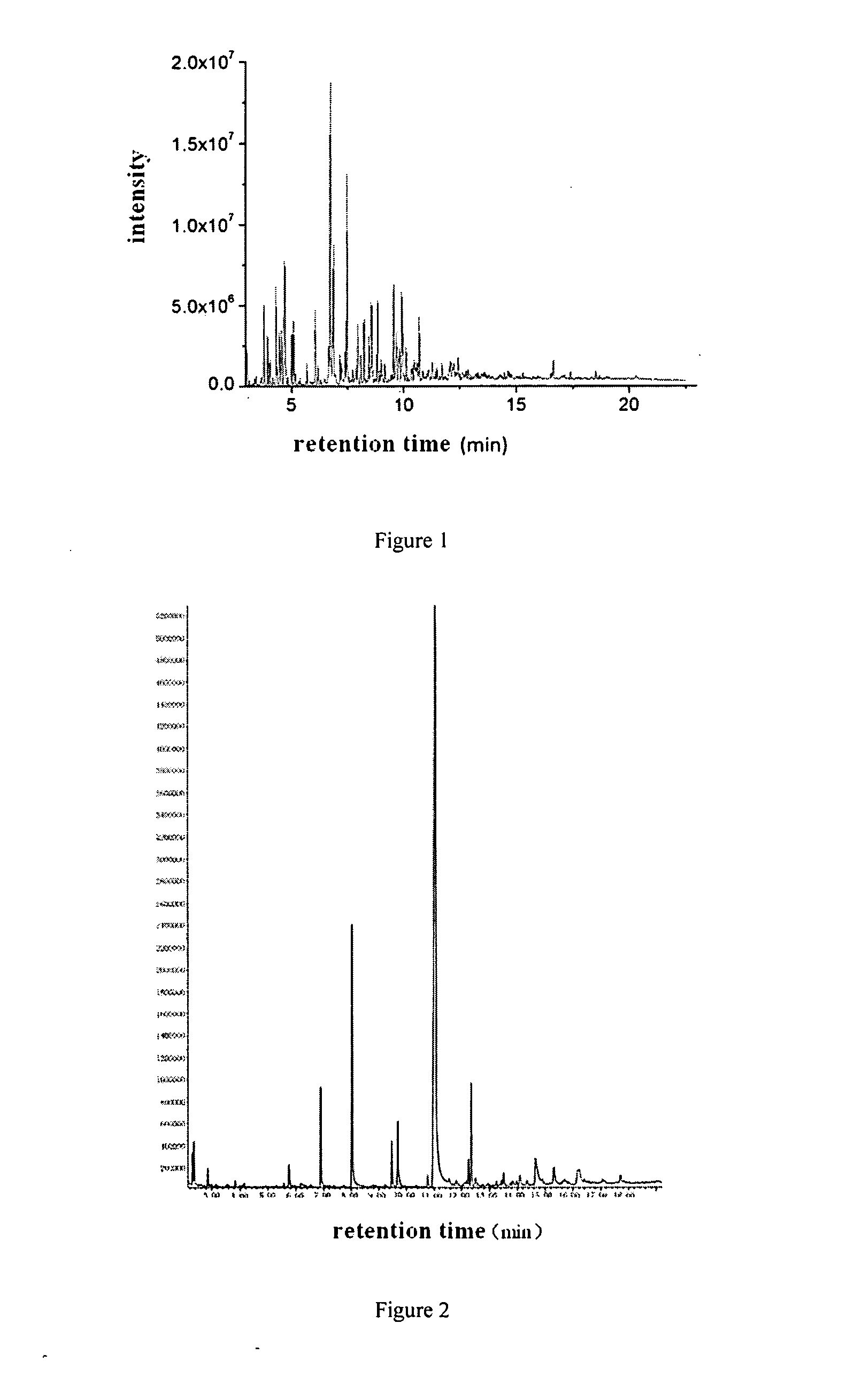Use of catalyst prepared with a subgroup vi element for the production of organic chemicals and fuels from lignin
a technology of organic chemicals and catalysts, applied in the direction of physical/chemical process catalysts, metal/metal-oxide/metal-hydroxide catalysts, etc., can solve the problems of low product yield, waste of resources and environmental pollution, and the urgent issue of exploring clean renewable energy resources, etc., to achieve high liquid product yield and wide resources
- Summary
- Abstract
- Description
- Claims
- Application Information
AI Technical Summary
Benefits of technology
Problems solved by technology
Method used
Image
Examples
example 1-2
[0024]With the exception of the Mo content, the same catalyst synthesis process was used as in example 1-1. The content of Mo in the Mo2C / AC catalyst was set as 1 wt. %, 5 wt. %, 10 wt. %, 15 wt. %, 20 wt. %, 30 wt. %, 50 wt. % and 80 wt. % with changing the concentration of ammonium molybdate or with repeated impregnation.
example 1-3
[0025]The same catalyst synthesis process was used as in example 1-1, except that the catalyst support was changed from AC to alumina (Al2O3), silicon carbide (SiC), silicon dioxide (SiO2). Therefore, molybdenum carbide catalysts with different support were obtained. For example: Mo2C / Al2O3, Mo2C / SiO2, Mo2C / SiC.
example 1-4
[0026]The same process of catalyst synthesis was used as in example 1-1, except that the final carbonization temperature was changed to 560° C., 620° C., 650° C., 680° C., 710° C., and 740° C. As a consequence, MoxCy / AC samples with different crystal form are obtained, where 0<x≦2, 0≦y≦1, x is 1, 1, 2, 1, 2, 2; y is 1, 0, 0.5, 0.8, 0.2, 0.6.
PUM
| Property | Measurement | Unit |
|---|---|---|
| temperature | aaaaa | aaaaa |
| temperature | aaaaa | aaaaa |
| temperature | aaaaa | aaaaa |
Abstract
Description
Claims
Application Information
 Login to View More
Login to View More - R&D
- Intellectual Property
- Life Sciences
- Materials
- Tech Scout
- Unparalleled Data Quality
- Higher Quality Content
- 60% Fewer Hallucinations
Browse by: Latest US Patents, China's latest patents, Technical Efficacy Thesaurus, Application Domain, Technology Topic, Popular Technical Reports.
© 2025 PatSnap. All rights reserved.Legal|Privacy policy|Modern Slavery Act Transparency Statement|Sitemap|About US| Contact US: help@patsnap.com

